May 29 - June 4, 2016: Issue 265
Commemoration Service for Aboriginal and Torres Strait Islander Veterans: May 27, 2016
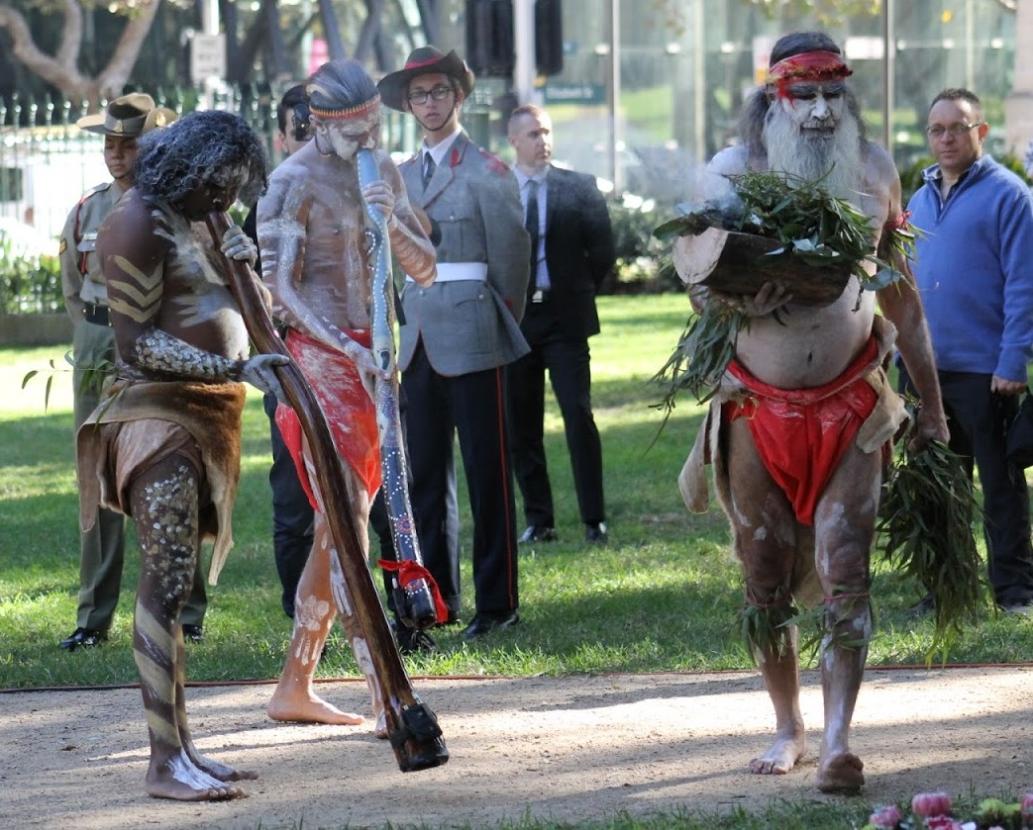
The Commemoration Service for Aboriginal and Torres Strait Islander Veterans commences with a Traditional Smoking Ceremony. The smoke covers the bodies of the ceremony’s participants purifying them as well as cleansing the surrounding area. The Ceremony was conducted by Uncle Steve Williams, with didgeridoo played by Leon Burchill and Deacon Hunter.
At the YININMADYEMI: THOU DIST LET FALL Indigenous Artwork
Adjacent to the ANZAC MEMORIAL – HYDE PARK SOUTH
Friday May 27th, 2016 - 10th annual NSW ceremony commemorating the service and sacrifice of Indigenous veterans
After a Smoking Ceremony conducted by Uncle Steve Williams, with didgeridoo played by Leon Burchill and Deacon Hunter, Sydney Catholic Schools Creative and Performing Arts (CaSPA) Aboriginal and Torres Strait Islander ensemble Murrawadeen Goodjarga performed to Youth Yindi’s Gapu to open the 10th Commemoration Service for our Indigenous Veterans.
Aunty Fay Carroll delivered the Welcome to Country, paying respects to the Gadigal people of the Eora nation and highlighting the contribution of Indigenous soldiers in the World War I and World War II.
“We are here today for a special reason,” she told students. “Without these people and the sacrifice they made, you would not have the lifestyle and the freedom that you have.”
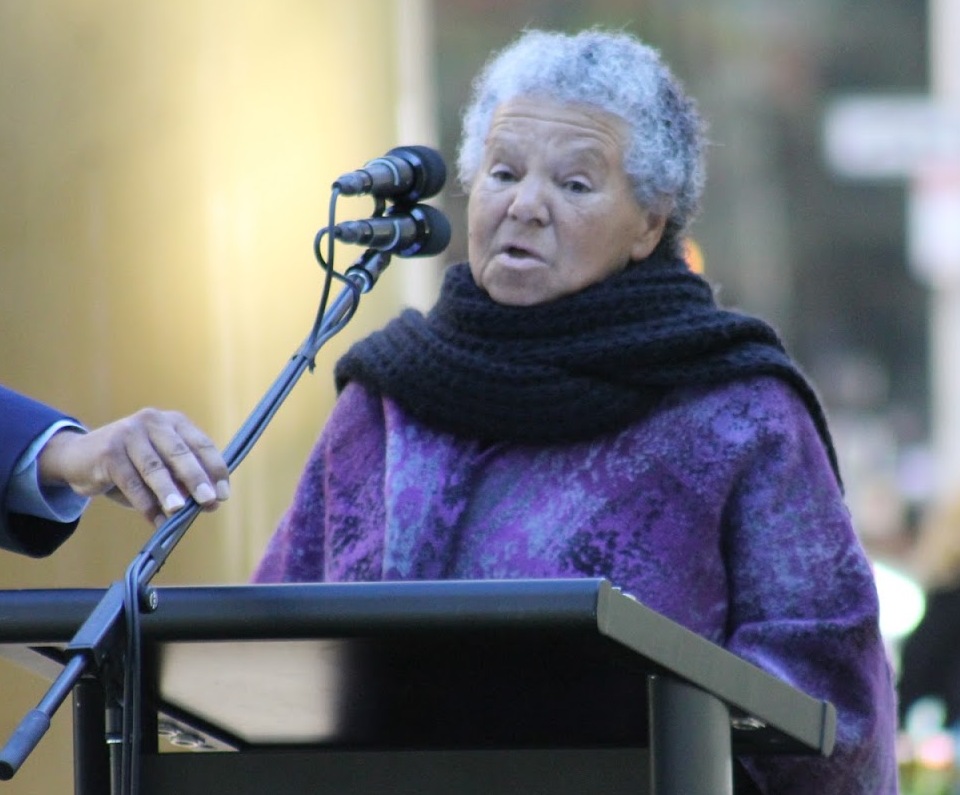
Warrant Officer Brett West RAAF, Master of Ceremonies
My name is Brett West, a Royal Australian Air Force Warrant Officer and a proud Yamatji man. I’m descended from the Nganda and Mulkula* language groups of the mid coast of Western Australia.
I would like to welcome you all to our Ceremony.
This Commemoration is an integral part f our national recognition of Aboriginal and Torres Strait Islanders who have served and continue to serve our country.
As we are gathered here in front of Yininmadyemi, I would like to share with you the meaning of this memorial. It acknowledges Aboriginal and Torres Strait Islander men and women who served in our nations military. It is composed of 4 standing bullets at 7-metres tall, to represent those who survived, and 3 fallen shells in remembrance of those who made the ultimate sacrifice.
the Memorial also references the circumstances faced by Aboriginal and Torres Strait Islander men and women when they returned to Australia. They were treated differently to their white Australian comrades, who were given land for their service, while Aboriginal and Torres Strait Islander people were still having their land taken away.
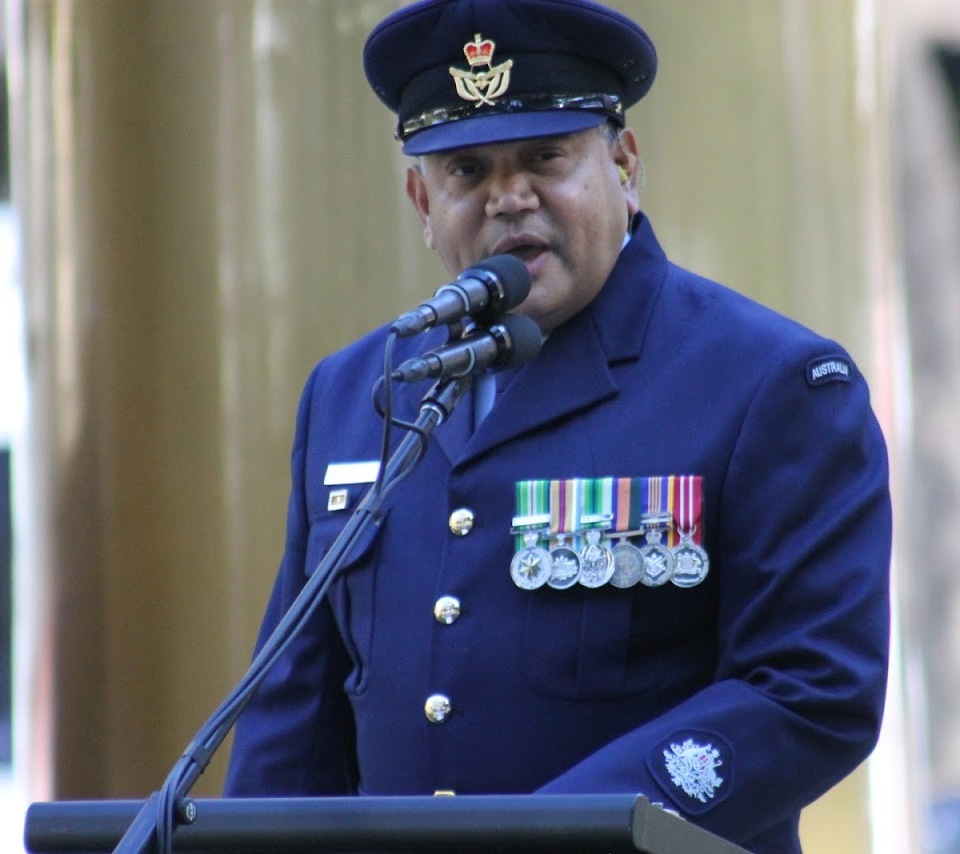
His Excellency General The Honourable David Hurley AC DSC (Ret'd), Governor of New South Wales
After acknowledging Mr Harry Allie BEM, Corporal Natalie Whyte and Mr Jordan Williams, Mr Rod White AM RFD, State President RSL NSW, Mr Daryl Maguire MP, Parliamentary Secretary for Veterans and The Centenary of ANZAC(representing the NSW Premier the Honourable Michael Baird) and Senator The Hon. Marise Payne, Federal Minister for Defence – Australia (representing the Honourable Malcolm Turnbull Prime Minister of Australia) Mr. David Harris, Shadow Minister for Aboriginal Affairs, representing Mr. Luke Foley, the leader of the opposition in NSW, Senator Jenny McAllister, representing the Honourable Bill Shorten, leader of the opposition, Mr. David Williams, President NSW Aboriginal & Torres Strait Islander Veterans & Services Association, Chaplain Ivan Grant, from the Australian Army, Representatives of our three Services and of our Ex-services organisations attending the service, His Excellency General The Honourable David Hurley AC DSC (Ret'd), Governor of New South Wales paid a special tribute to the schoolchildren attending, stating that they ‘represent so many aspects of our present and our future’.
Address
As Governor of New South Wales and Patron the Returned Services League of New South Wales I’m honoured to be invited to Address you this morning which, perhaps unsurprisingly falls on the 49th anniversary of the 1967 Referendum when we began in our country to take the first steps to solid real reconciliation with the Aboriginal people of our country. Indeed, long overdue, and one of the most significant events in our history.
Last year, at this very location, I was privileged to unveil this Memorial, ‘Yininmadyemi’, translated as ‘Thou Didst Let Fall’, here in Hyde Park. Set alongside the Anzac War Memorial, this Memorial was also long awaited because it honours Aboriginal and Torres Strait Islander servicemen and women and their contribution to the armed forces of Australia.
In this week of National Reconciliation I am honoured to Address you on behalf of the people of New South Wales. I pay my respects top all Aboriginal and Torres Strait Islander people whop served in ever conflict in which our nation has been involved.
I also pay my respects to the traditional owners of the land on which we gather, the Gadigal people of the Eora Nation, for whom Hyde Park South has significance as ‘a ritual ground, a crossroads for traditional walking trails, and an important site for Aboriginal ceremony, gathering and camping.’
I acknowledge their living culture and affirm my respect for their elders, ancestors and descendants. It is most appropriate that we gather here today for this Service.
This Service has become one of our most important Commemoration Services. This recognises our Indigenous Service men and women who stood shoulder to shoulder with other Australians and New Zealanders on the ridges, in the trenches, in the deserts, and the battlefields of the Middle East, Europe, North Africa, Asia, Pacific and indeed up until Afghanistan today.
Many did this before they were recognised as citizens of our country. During World War One, with a very strict enlistment program, they had to show that they were white enough to fight for their country. Many did not declare their Aboriginal ancestry when they enlisted. Once enlisted though there was a different rule; each was accepted as a member of their Service, and in the tumultuous democracy of the battlefield, reconciliation was achieved.
This, as we know, changed on their return home, and we still have much work to do to fully recognise the injustice that occurred.
However today I would like to speak about a positive thing and about a sector of our community which is making real progress in the recognition of our current Service men and women who are of Aboriginal descent and trying to address the past.
During Reconciliation Week this year the service of our Indigenous men and women past and present will be showcased and shared at various Defence locations in line with this year’s theme of ‘Our History, Our Story, Our Future’.
The Defence Force is also engaging with the current generation and communities to promote leadership and employment opportunities. In line with Reconciliation Australia’s themes of Relationships, Respect and Opportunities, the Services Reconciliation Action Plan is going to double the number of Aboriginal service men and women serving in our Defence Forces. It will fly the flags of the Aboriginal and Torres Strait Islanders on every Defence establishment. On the entry signs to Defence bases the Traditional custodians of the land will be recognised. New pathways will be opened for serving men and women to reach higher ranks.
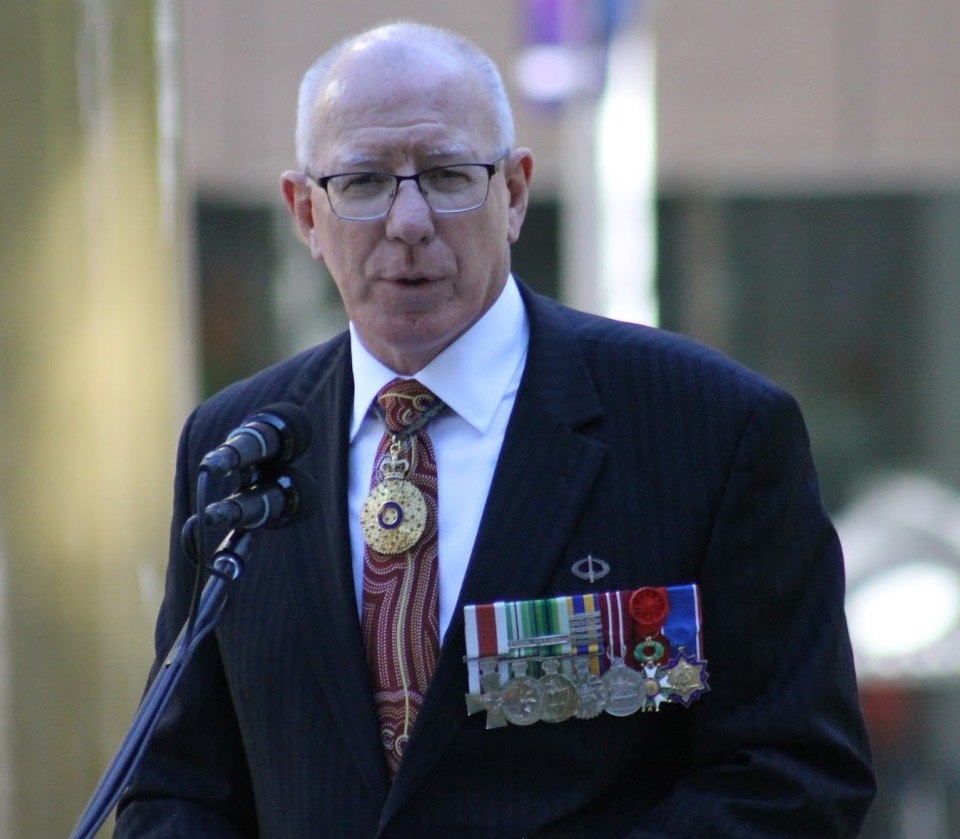
Veteran’s Address
Mr David Williams, President NSW Aboriginal & Torres Strait Islander Veterans & Services Association.
Mr. David Williams was born at Baryulgil in Grafton in 1947 and is a Budjalung man from the Northern coast of New South Wales who enlisted on the Royal Australian Navy in July 1965 as a Marine Technician for submarines. He left the Navy in 1983 with a rank of Chief Petty Officer.
He explained in his opening remarks that his father served with the Dutch Forces during WWII and due to the White Australia policy prevalent post WWII “he couldn’t have got back into Australia if he’d tried”.
“The bonus of that was I was reared as an Aboriginal fellow, the drawback was that being this dark, and having this curly hair, I can assure you it wasn’t an easy track.
Before I go any further I’d like to thank the Gadigal people for allowing me here on their land and thank our ancestors, past, present and into the future.
I would like to tell you today how all this came about. There was a lady in Melbourne, Auntie Dot Peters (a Wurundjeri Elder), who asked the Minister at that time if it was possible to have a Memorial Service for our Aboriginal people who had served over the years. In 2006 this happened.
In 2007 we had a pow wow here with the Department of Veterans Affairs, The RSL and the City of Sydney Council and we had six weeks to put it together.”
Addressing the children Mr. Williams explained, “This Service is more for the formal military acknowledgments with an Aboriginal component. The one we have in Redfern on ANZAC Day is more of a community function – that’s the difference between the two. As I say to a lot of our Veterans ‘we’re supposed to be with our Unit on ANZAC Day’ – so it’s their choice whether to be at that one or the main march here. I did three years of marching in Redfern, which is absolutely superb, however if I miss my Unit, with deceased Veterans now among us, and this year particularly when there were eight War Widows, there are gaps where connection needs to be maintained.
"This whole ceremony was set up for aiming our attention at you children."
“You children have got to take over from us and you’ve got to do a better job than us,” he told the students.
“By us joining the military this gave us the opportunity to learn new skills. For instance, some of the guest speakers we’ve had here. There was a young lady, Professor Lisa Polter Jackson, once a little girl from Redfern who was told by her teachers that she wasn’t going to amount to much at all. She’s a Group Captain in the Air Force now and a professor at University. The military gave her that opportunity.
“There was another chap from the Thursday Island, B J Tapham. His mother was in the Navy, his father was in the Navy and he’s the first Surgeon to come out of the TI (Thursday Island) fellas.”
Mr. Williams said the skills he had gained through a career in the Defence force and education and communication were important for young Australians to take up their role as future leaders of their Indigenous communities.
He invited students to introduce themselves to the Army, Navy and Air Force personnel at the ceremony and learn from their experiences.
Mr Williams also told the young audience there were “more good people out there willing to say G’day mate, than there are bad”.
“What we have to do is communicate more, because it’s up to you to go back to community and run it,” he said. “Our regional towns are behind because of [lack of] employment, that’s why education is so important.”
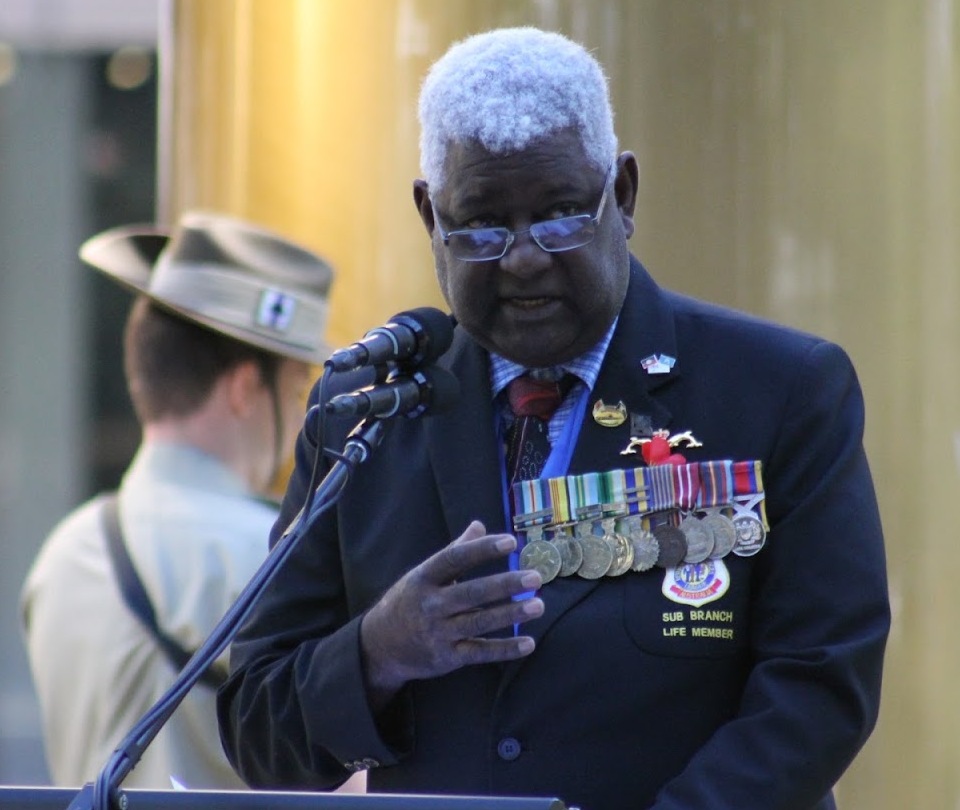
Oliver Wyatt, whose grandmother served in the Australian Army Medical Women’s Service during WWII, has attended this service six years in a row, since 5th grade. He was very impressed by the Governor’s Address and announcements and really liked what Mr. Williams expressed in his Address as well.
The National Anthem, Advance Australia Fair sung in Dharawal by the children of the Alexandria Park Community School Vocal Ensemble, was a standout for every adult attending. Wonderfully lyrical, this was a beautiful tribute.
His Excellency General The Honourable David Hurley AC DSC (Ret'd), Governor of New South Wales, and Mrs. Linda Hurley stopped to speak with the children’s teacher and the students themselves after the official Service.
Close to 1000 students attended the 10th annual Commemoration Service for Aboriginal and Torres Strait Islander Veterans. The event, held at Hyde Park on May 27, coinciding with the commencement of National Reconciliation Week, delivered positive messages, ways forward for all present, and generated a palpable atmosphere of peace - even the roar of traffic and impatient car horns on the rim of the park seemed dulled, quieter.
Doreen Cheery OAM, who will soon be celebrating her 90th birthday, plans to attend The Commemoration Service for our Indigenous Veterans again next year to represent the Women’s Land Army (NSW Branch) if she is able.
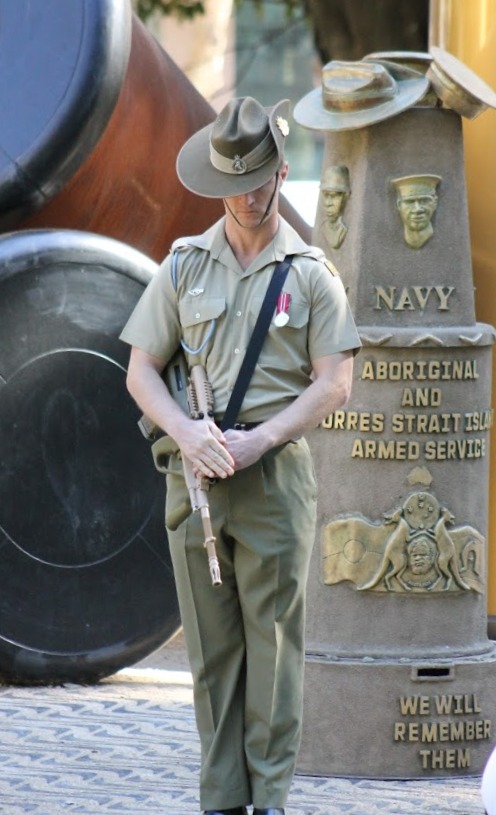 Arrival of Official Party
Arrival of Official PartyTraditional Smoking Ceremony
Welcome to Country - Aunty Fay Carroll
Welcome Dance - Sydney Catholic Schools Murrawadeen Goodjarga Ensemble
Mount Catafalque Party - Provided by 6th Aviation Regiment
Introduction - Warrant Officer Brett West RAAF, Master of Ceremonies
Bible Reading and Opening Prayer - Offered by Army Chaplain Ivan Grant (Wiradjuri Tribe)
Key Address
His Excellency General The Hon: David Hurley AC DSC (Ret'd)
Governor of New South Wales
Veteran's Address
Mr David Williams (Bundjalung Tribe)
President NSW Aboriginal and Torres Strait Islander Veterans Association
Wreath laid by Community Elders
Aunty Fay Carroll and Mr David Williams
Assisted by Students from Chifley Public School and
Our Lady of Mt Carmel Catholic Primary School, Waterloo
Wreath Laying
(accompanied by the Didgeridoo)
His Excellency General The Hon. David Hurley AC DSC (Ret' d)
Mr Harry Allie BEM, Corporal Natalie Whyte and Mr Jordan Williams
Mr Rod White AM RFD
Mr Daryl Maguire MP and Mr David Harris MP
Various ex-service representatives and schools as announced and personal tributes
THE ODE
Mr Rod White AM RFD
State President RSL NSW
They went with songs to the battle, they were young,
Straight of limb, true of eye, steady and aglow.
They were staunch to the end against odds uncounted,
They fell with their faces to the foe.
They shall grow not old, as we that are left grow old,
Age shall not weary them, nor the years condemn.
At the going down of the sun and in the morning,
We will remember them.
Lest We Forget
THE LAST POST
ONE MINUTE'S SILENCE
THE ROUSE
2016 marks the 10th annual NSW ceremony commemorating the service and sacrifice of Indigenous veterans. The year on year increasing importance of this ceremony as the major NSW event honouring former and current Aboriginal and Torres Strait Islander servicemen and servicewomen grows with the number of people that attend to show their respect and to say, "Thank you for your service."
The organising committee especially acknowledges the support of successive Governors of New South Wales, Dame Marie Bashir AD CVO and His Excellency General the Honourable David John Hurley AC DSC.
For their service and for being such strong role models to our youth, the organising committee thanks our keynote speakers:
2007 Mr Harry Buckley
2008 Mr Norman Laing LLB
2009 LCDR Bert Slape OAM RAN
2010 SQNLDR Dr Lisa Jackson Pulver
2011 LT Dr Beimop Tapim
2012 CAPT Chloe Dray
2013 FSGT Don Taylor
2014 LS Lateika Smith RAN
2015 WO1 Colin Watego
2016 Mr David Williams
The Organising Committee thanks:
The King's School
Department of Defence
Benediction
Offered by Army Chaplain Ivan Grant
Uncle Steve Williams
Is a member of the Wiradjuri people and uses his art to share his culture with local communities. He completed a degree in Fine Arts and holds Aboriginal art workshops which include several mural projects. He established the first Artisan Shed in Liverpool where he is a long-time resident and Community volunteer of the Liverpool area.
Mr. Williams was recognised for these efforts and contributions volunteering for government and non-government agencies and community groups such as Strong Fathers, Strong Families which engages Aboriginal men with their community and encourages them to be positive role models. In 2014 his efforts were recognised by Liverpool Council when he was named Citizen of the Year at a ceremony at Woodward Park on Australia Day.
Mr. Williams conduct smoking ceremonies at community events and featured in Christine Anu's My Island Home clip and was involved in the ABC's animated series The Dreaming Stories.
ADVANCE AUSTRALIA FAIR
Led by Alexandria Park Community School Vocal Ensemble in Dharawal language
Nyini Australiagal budjari garibara
Nyini budjari buriga
Budjari bamul yararaga mari walaba
Bamulga mari walanmirang
Bamul merong mari kaban walaba adjajarang
waratah .
Yanamuru Australiagal yanamuru
Australiagal
Yana budjari Australiagal
Nyini bayala gawuwi bayala gawuwi
Yana budjari Australiagal
Australians all let us rejoice,
For we are young and free;
We've golden soil and wealth for toil;
Our home is girt by sea;
Our land abounds in nature's gifts
Of beauty rich and rare;
In history's page, let every stage
Advance Australia Fair.
In joyful strains then let us sing,
Advance Australia Fair.
Nyini bayala gawuwi bayala gawuwi
Yana budjari Australiagal
* Apologies for incorrect spelling of some words – were spelt as sounded – no offense intended other than to correctly transcribe all spoken.
**WOFF Len Waters - Air Force’s first known Aboriginal fighter pilot.
DEFENCE RECONCILIATION ACTION PLAN 2015-2018
Defence Reconciliation Action Plan
We are pleased to announce the release of the next Defence Reconciliation Action Plan (D-RAP) 2015-2018. This plan reflects our enduring commitment and recognition of reconciliation, as a fundamental aspect of Pathway to Change and the overarching Defence Diversity and Inclusion Strategy.
D-RAP 2015-2018 drives three simple concepts of:
- respect,
- inclusion and
- fairness.
The key actions outlined in the plan reflect the three Reconciliation Australia themes to improve:
relationships,
show respect and
increase opportunities
for Aboriginal and Torres Strait Islander people.
Download Defence Reconciliation Action Plan 2015-2018 PDF at: http://www.defence.gov.au/Diversity/Indigenous/strategic/drap/default.asp
Minister for Defence – Defence commits to Indigenous reconciliation
19 October 2015
A plan to attract and retain more Indigenous staff in Defence was released in Canberra today.
Minister for Defence Senator the Hon Marise Payne formally launched the Defence Reconciliation Action Plan 2015-2018 during a ceremony at Russell Offices.
Minister Payne said the Reconciliation Action Plan set out Defence’s commitment to achieving reconciliation and contributing to the national efforts to close the gap in Indigenous disadvantage.
Minister Payne said the plan was developed in partnership with Reconciliation Australia and involved extensive consultation.
“This is Defence’s third Reconciliation Action Plan and it builds on the progress Defence has made over a number of years, while acknowledging there is still work to be done,” Minister Payne said.
“Reconciliation in Defence is everyone’s business.’’
The key actions outlined in the plan reflect the three Reconciliation Australia themes to improve relationships, show respect and increase opportunities for Aboriginal and Torres Strait Islander people.
Minister Payne said the Reconciliation Action Plan would increase opportunities to make positive cultural change within Defence.
“The plan will guide us in our efforts to attract and retain more Aboriginal and Torres Strait Islander members,” she said.
As a sign of respect for Defence’s Indigenous heritage, the main theatrette in Russell Offices was named The Ngunnawal Theatrette after the local Aboriginal community.
A short video telling the real stories of current Indigenous Defence personnel was also shown, highlighting the organisation’s commitment to improving opportunities for Aboriginal and Torres Strait Islander people.
On Monday, 19 October the Minister for Defence, Senator the Hon. Marise Payne, Chief of the Defence Force, Air Chief Marshal Mark Binskin, AC, and the Secretary of Defence, Dennis Richardson launched the Defence Reconciliation Action Plan (DRAP), Defence's key guiding document for Indigenous affairs for the next three years.
Present at the ceremony were Group Heads and Service Chiefs, Canberra-based Indigenous APS and ADF staff and representatives from Reconciliation Australia, Wesfarmers, the United Ngunnawal Elders Council, Jumbana Balarinji and various Government departments.
To celebrate the launch of the DRAP-and to demonstrate Defence's commitment to reconciliation with Indigenous Australians-the R1 theatrette was named 'Ngunnawal' acknowledging the local traditional owners of the ACT and region. The name was proudly gifted to Defence by the United Ngunnawal Elders Council. The launch also included the presentation of an engraved-metal boab nut from Wesfarmers to Defence.
About Yininmadyemi: Thou didst let fall
Aboriginal artist Tony Albert whose family has over 80-years of combined military service created a public artwork in Hyde Park to honour the sacrifices and bravery of Aboriginal and Torres Strait Islander service men and women.
Mr Albert’s dramatic sculpture work is inspired by his grandfather’s story about himself and 6 soldiers who escaped from a prisoner of war camp in Germany, only to be caught by Italian soldiers who lined them up to be executed.
The Italians shot 3 of the men before realising their mistake – the men were POWs and should have been returned to Germany. Mr Albert’s artwork is a reminder of how his grandfather and fellow service people were treated differently to their white comrades after the war.
The artwork is composed of 4 standing bullets at 7-metres tall, to represent those who survived and 3 fallen shells in remembrance of those who made the ultimate sacrifice.
“When service men and women returned to Australia, they were given land for their service. However, not only was Eddie and his fellow Aboriginal soldiers not given any land, their land was still being taken away.
“Eddie and fellow Aboriginal and Torres Strait Islander men and women defended our country, they were prepared to fall but upon returning to our country, they were left to fall again – ‘yininmadyemi,’ thou didst let fall,” Mr Albert said.
On 31st March 2015, His Excellency General The Honourable David Hurley AC DSC (Ret'd), Governor of New South Wales unveiled the, ‘Yininmadyemi’, translated as ‘Thou Didst Let Fall’ War Memorial.
In his 2015 Key Address His Excellency General The Honourable David Hurley AC DSC (Ret'd), Governor of New South Wales stated, “ This Memorial is a significant part of the Eora Journey and, also, a significant part of our State and nation’s journey towards Reconciliation.
Aboriginal and Torres Strait Islanders were present in every campaign we have been involved in. Even prior to the First World War, 50 Aboriginal men signed up for the Boer War; many more for the First World War, and their contribution was even greater during the Second World War….”
The Australian Army Medical Women's Service (AAMWS)
Growing out of the St John Ambulance Voluntary Aid Detachments, it was formed in December 1942 and its members served as nurses in military hospitals in the Middle East, Australia and, with the British Commonwealth Occupation Force, in Japan. In 1951, the AAMWS was merged into the Royal Australian Army Nursing Corps.
The Australian Army Medical Women's Service (AAMWS) was established in December 1942. At that stage it was decided to distinguish between Voluntary Aid Detachments, whose governing body was the Joint State Council in each State and the Joint Central Council (the Commonwealth authority), and Voluntary Aids who were serving at Military Hospitals on a full-time basis under Army control. [1] Author Patsy Adam-Smith, herself a member of the Voluntary Aid Detachment (VAD) who joined the AAMWS, states in : 'From that date [December 1942], the Service's officers and soldiers were subject to military law and to the provisions of the Defence Act, the Army Act and the Rules of Procedure…'The majority of the original recruits for the AAMWS were drawn from the ranks of the Voluntary Aid Detachments, and the experience they already had was of great benefit in their work in military hospitals, both home and overseas.' ' In July 1949 the Australian Army Medical Women's Service became part of the Regular Army. Two years later The Service was disbanded and its duties were incorporated into the Royal Australian Army Nursing Corps. [1] p. 194 and p. 50
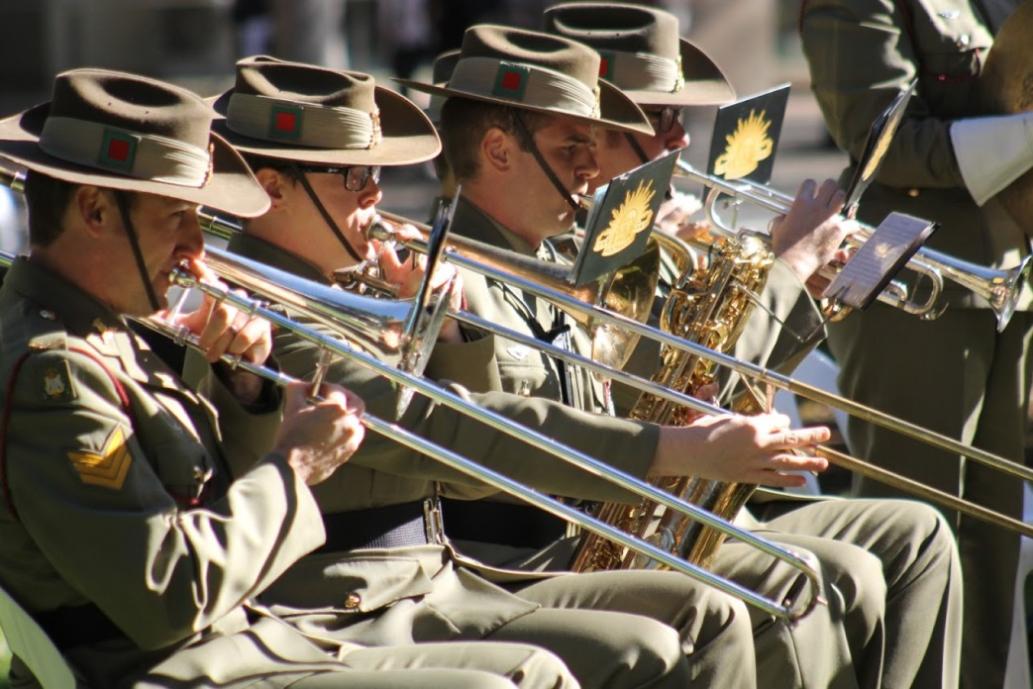
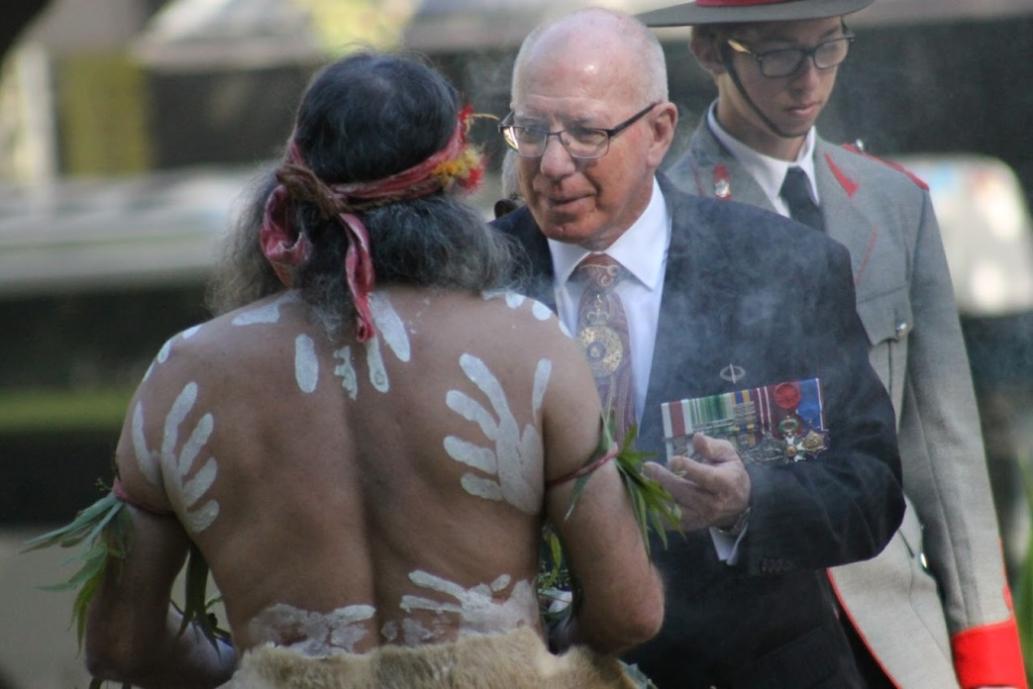
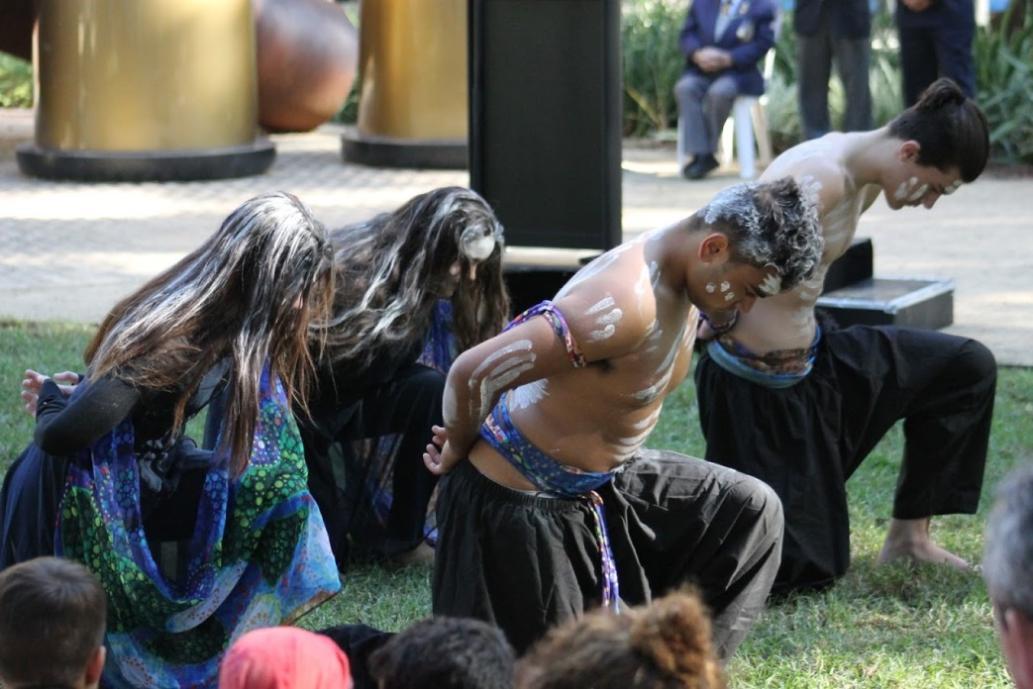
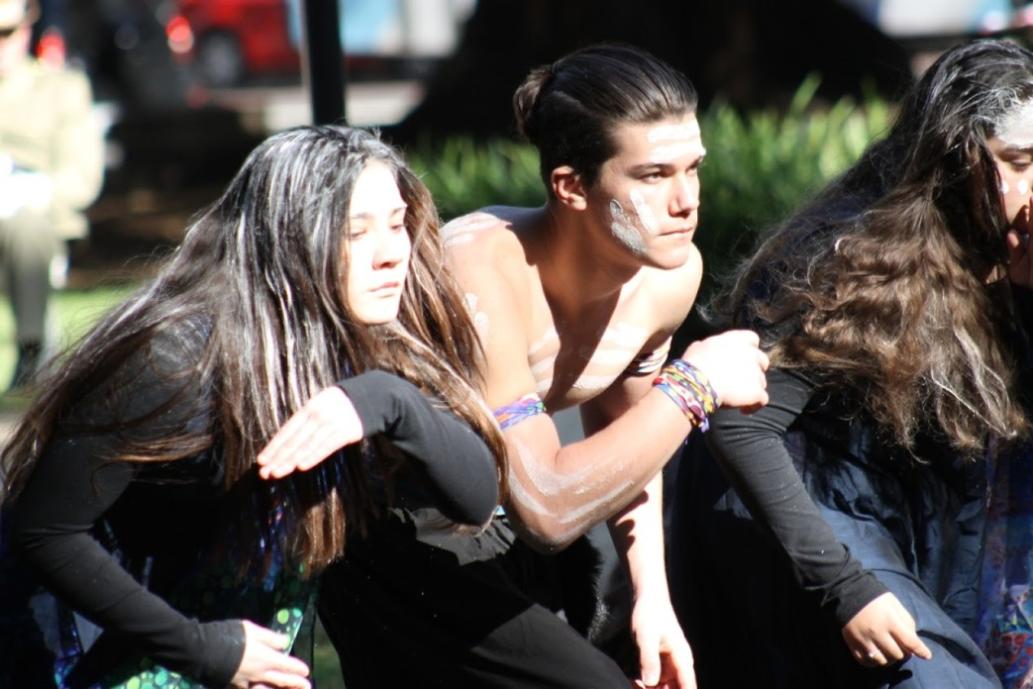
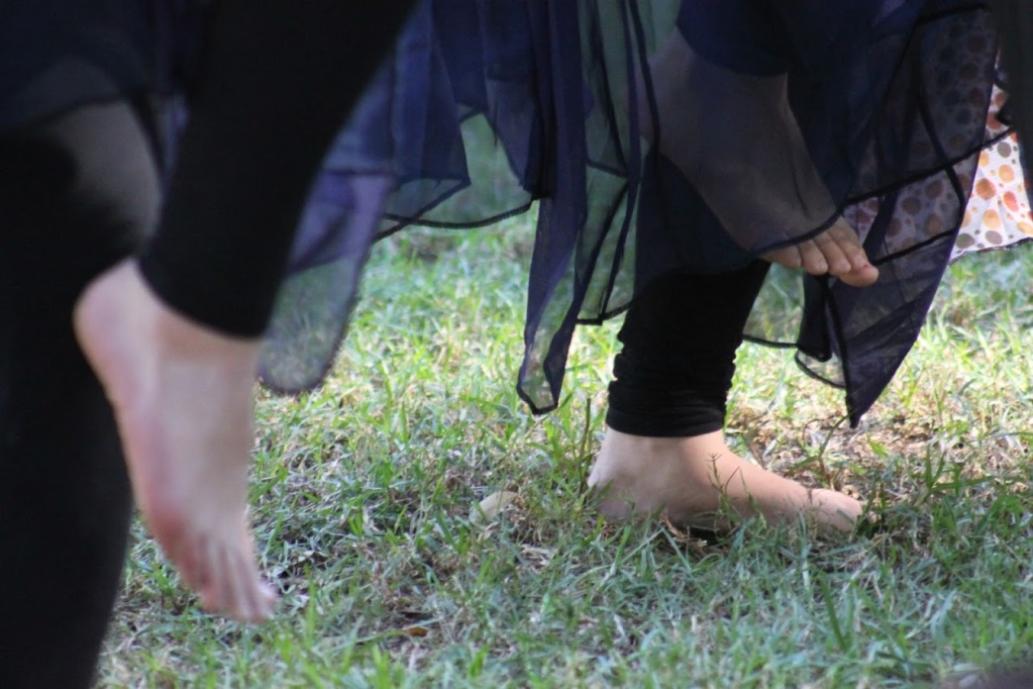
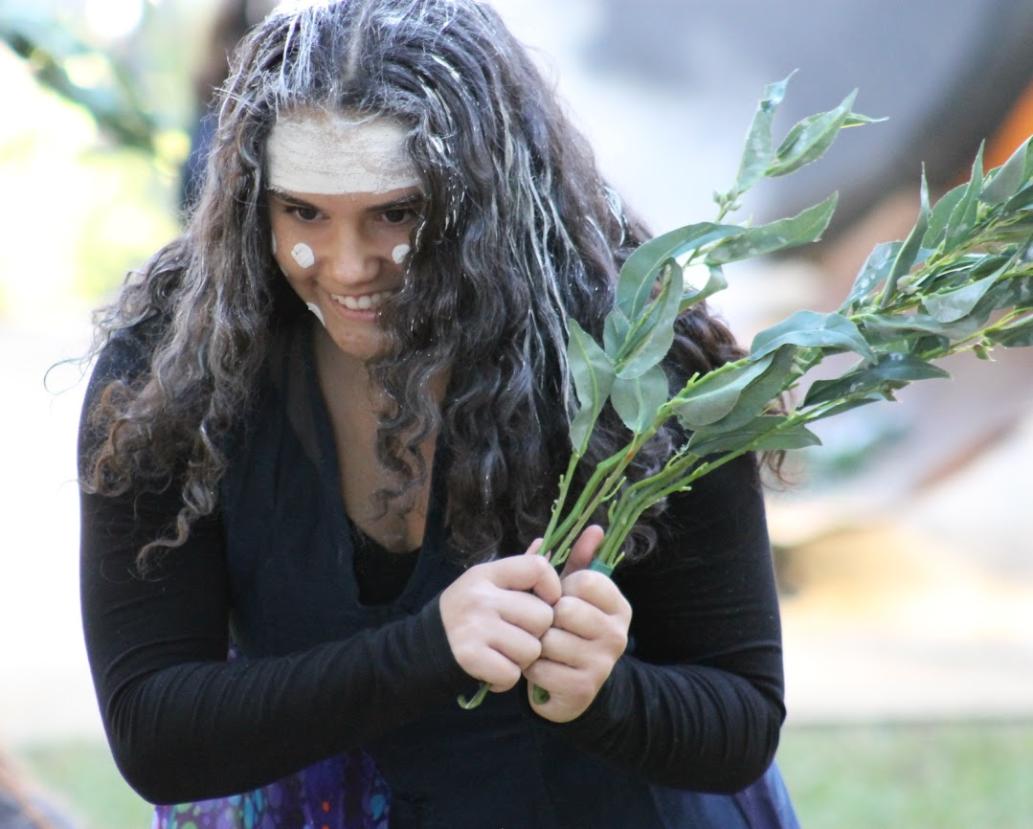
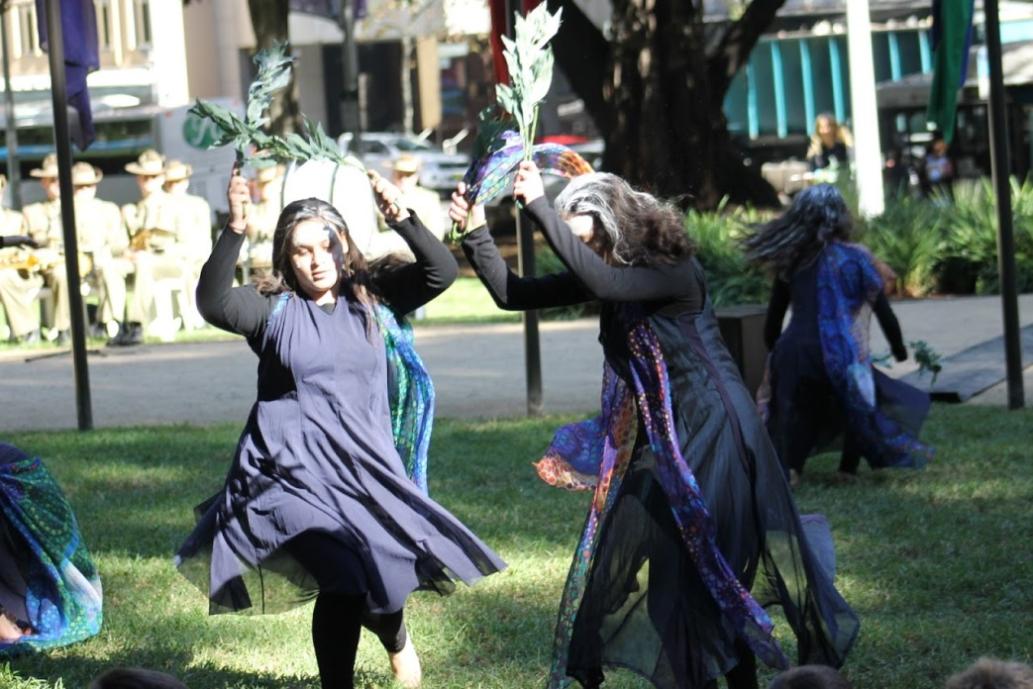
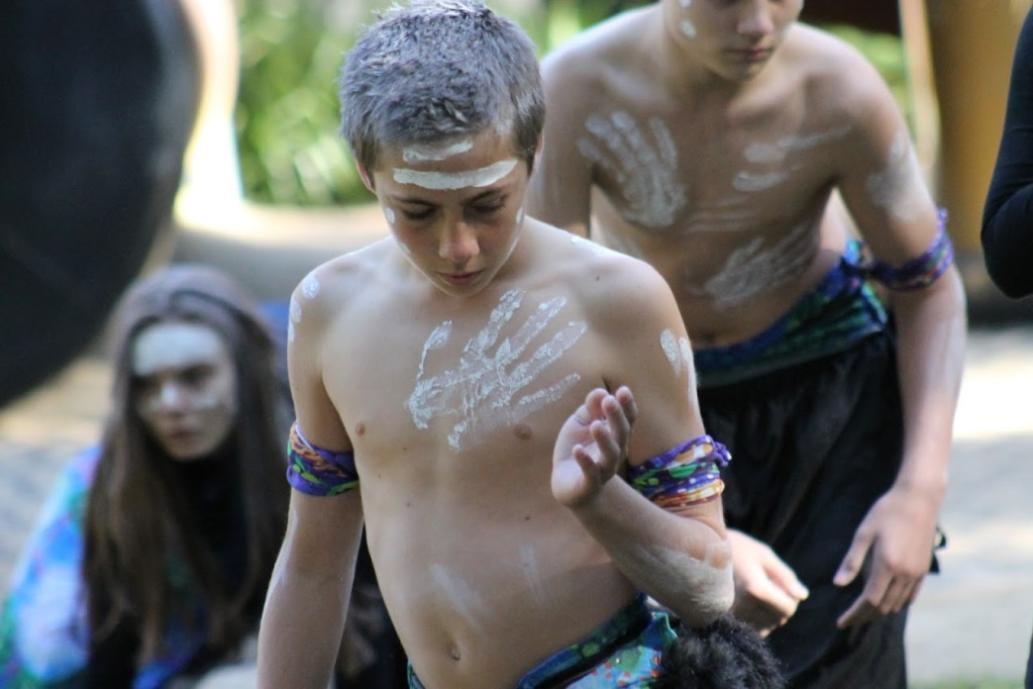
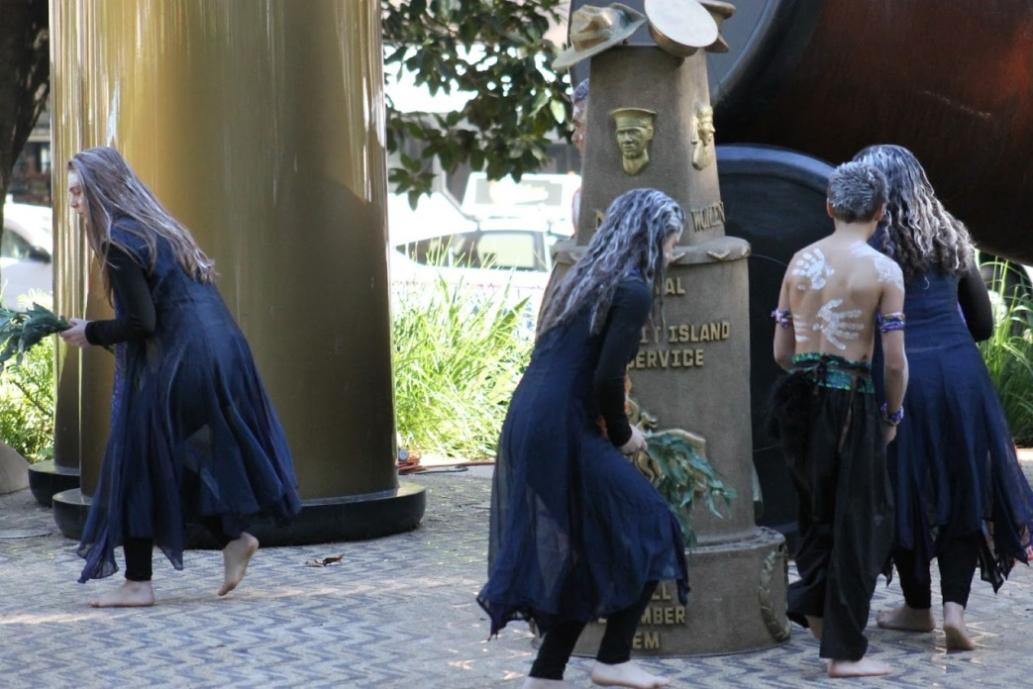
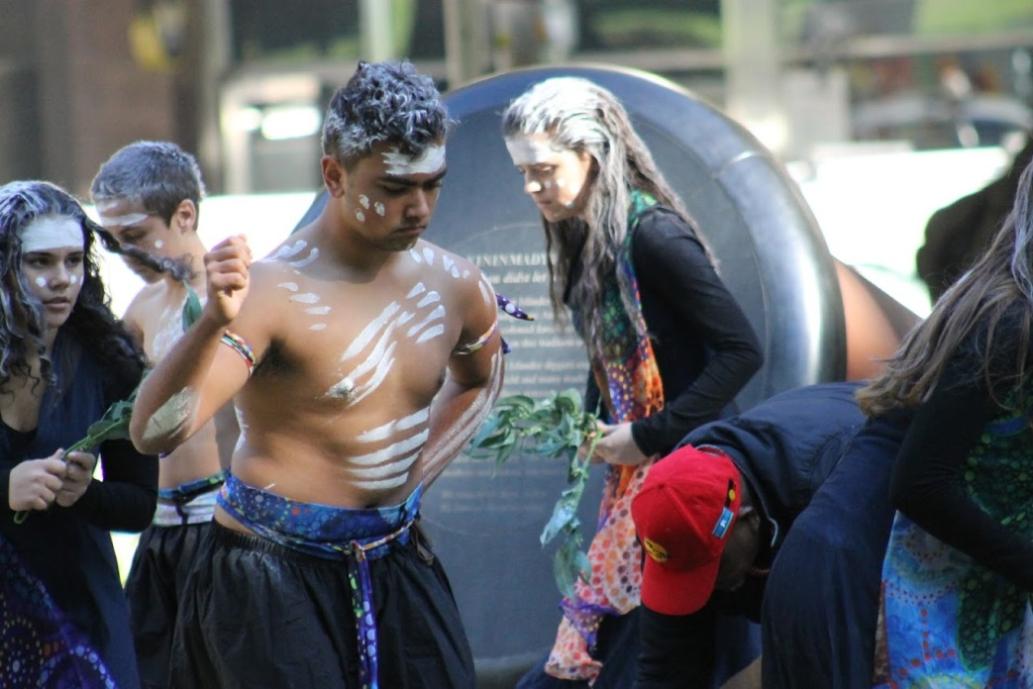
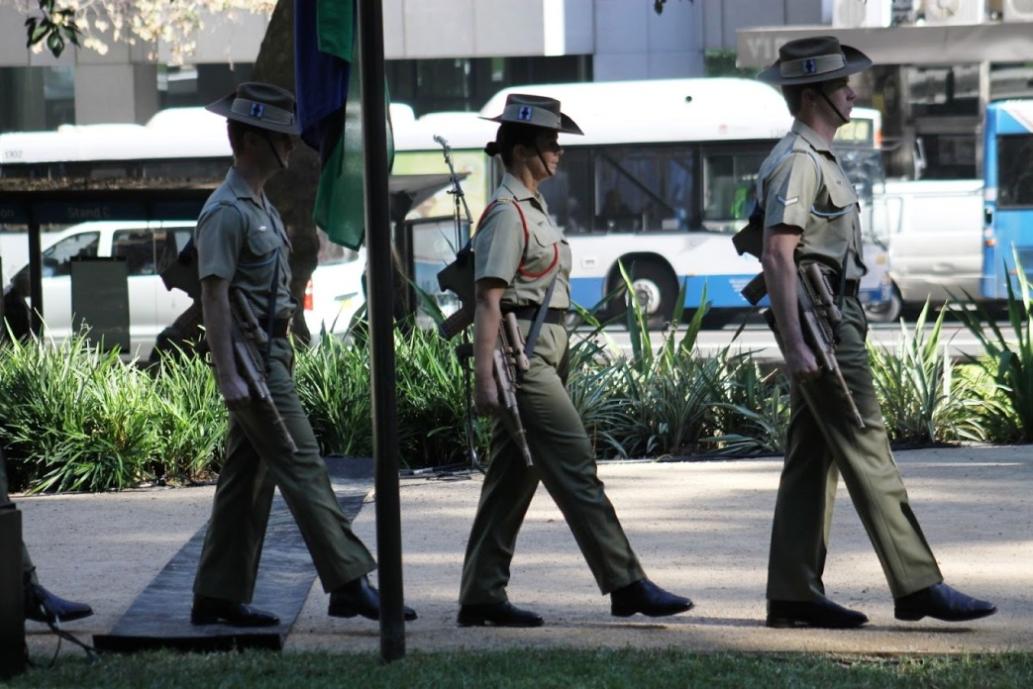
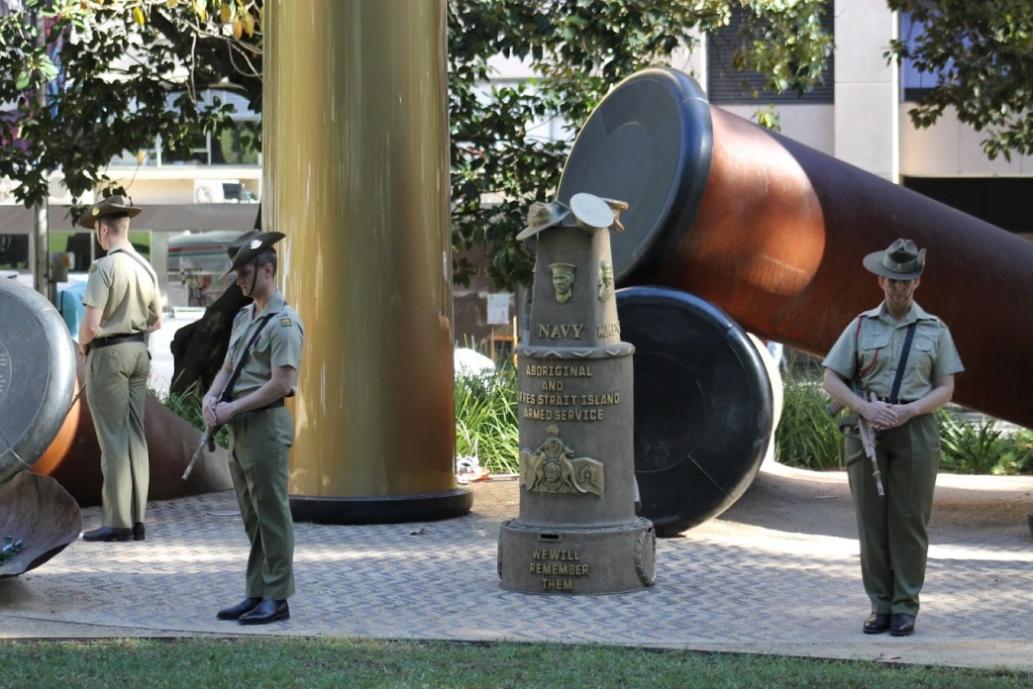
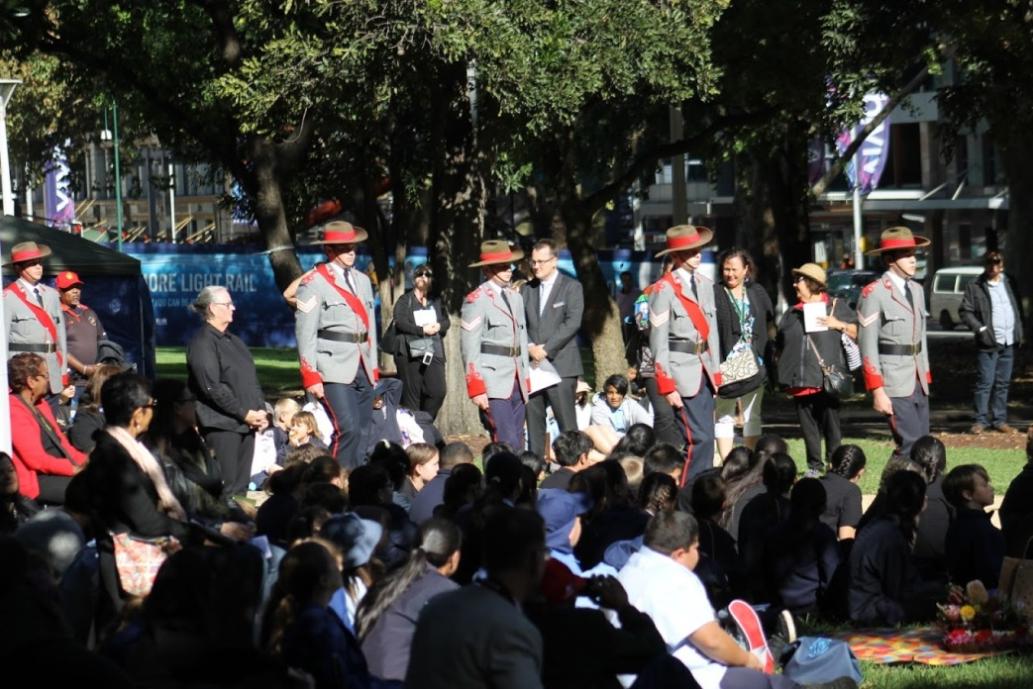
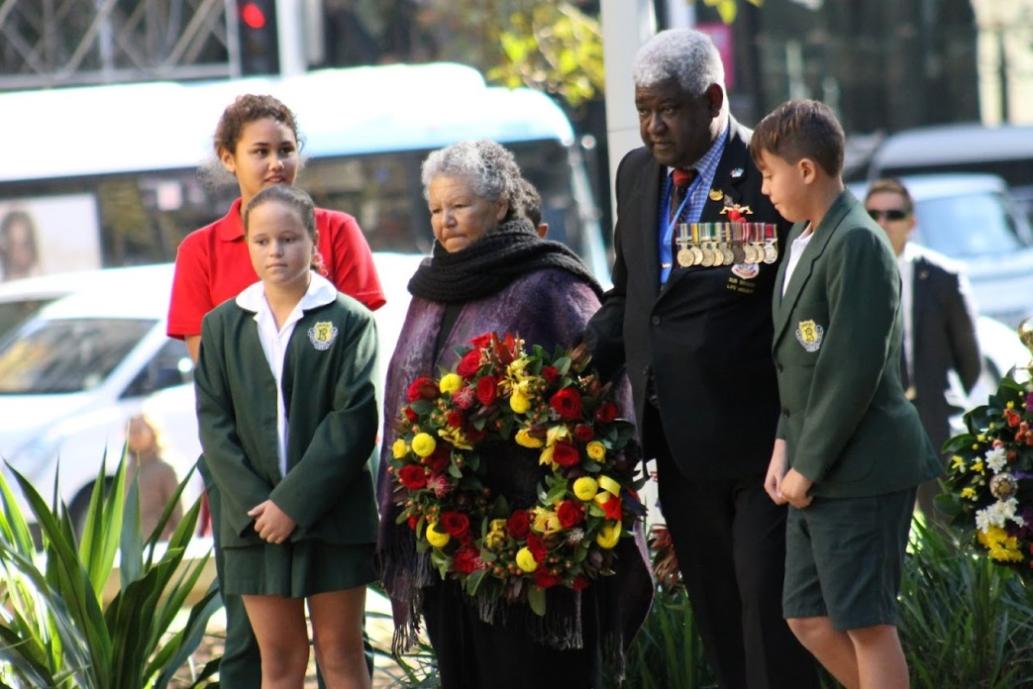
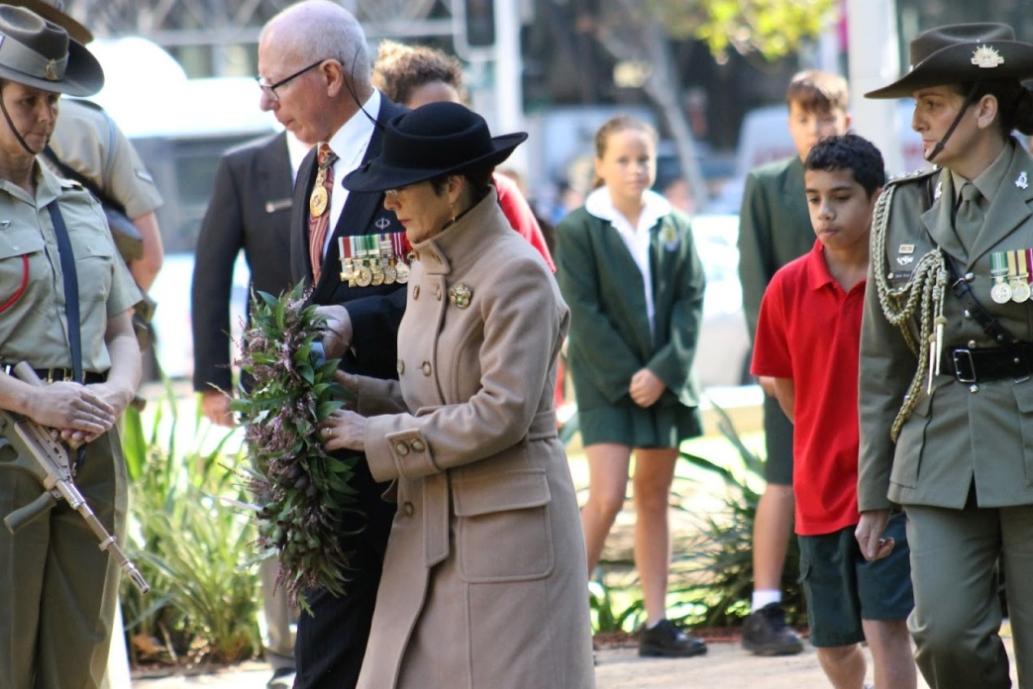
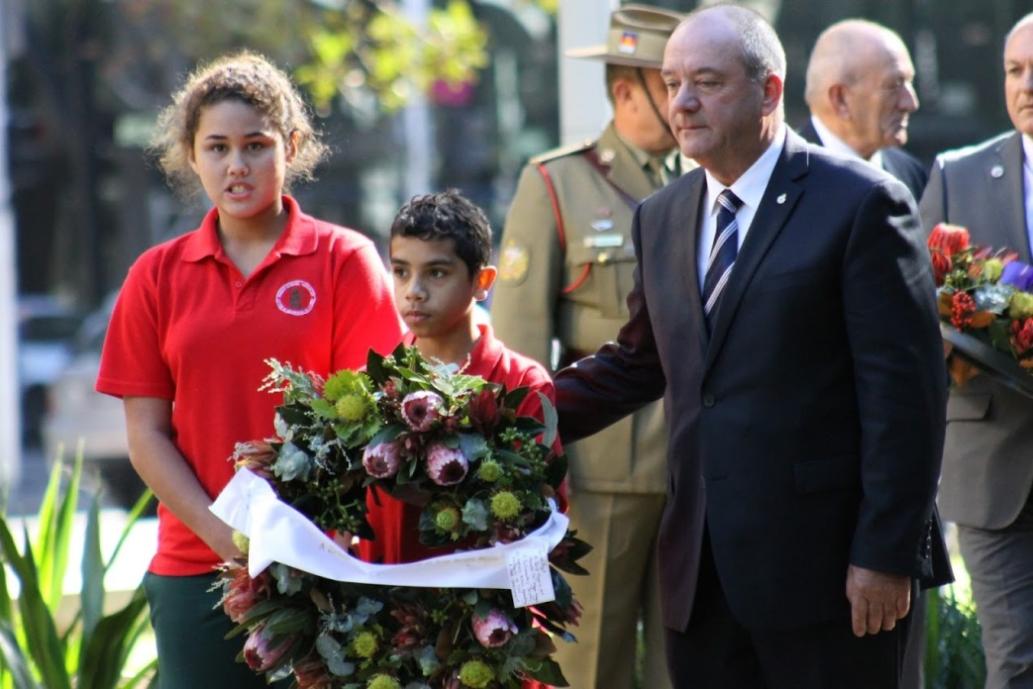
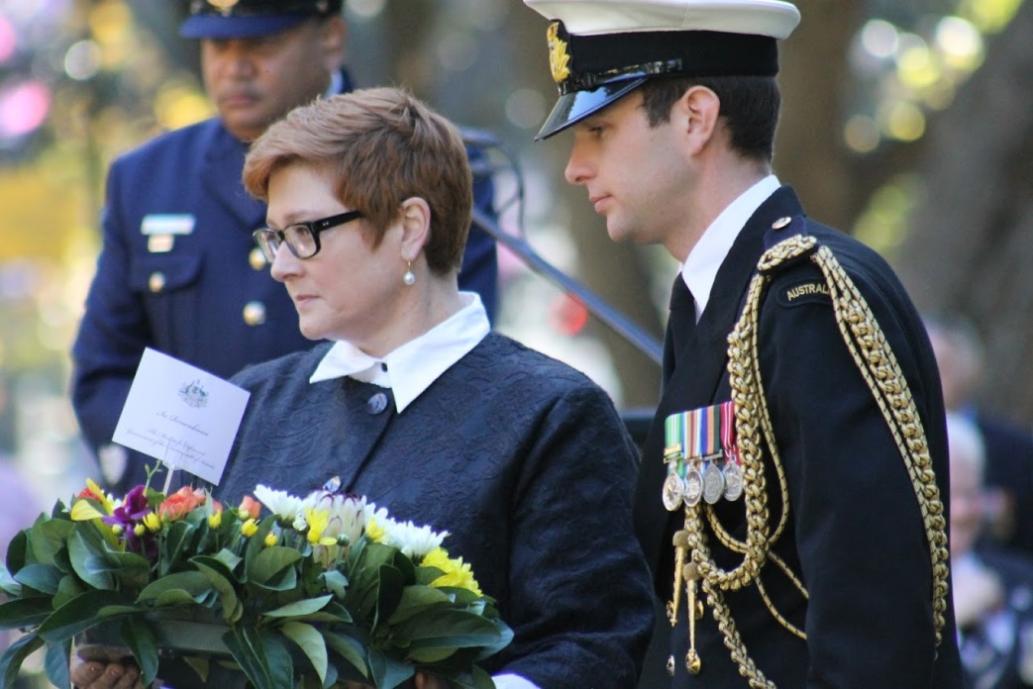
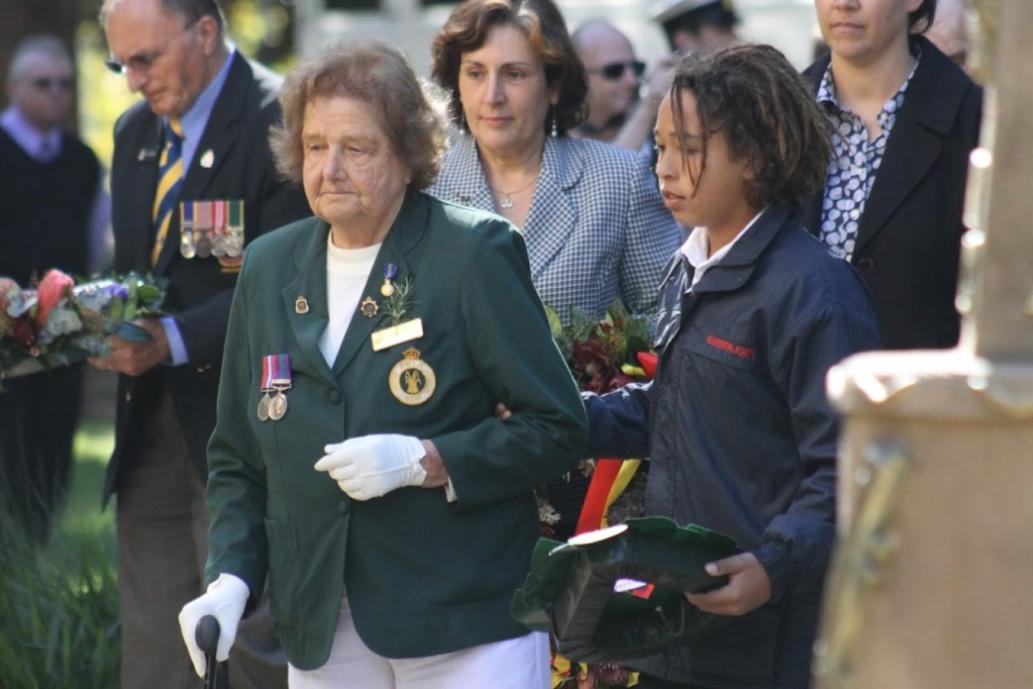
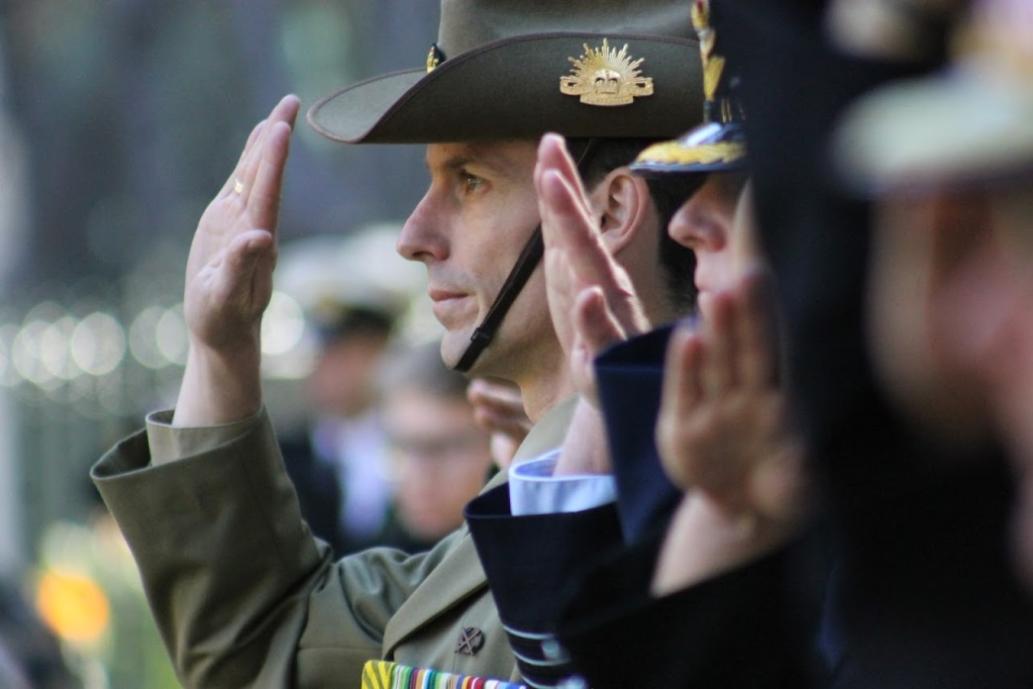
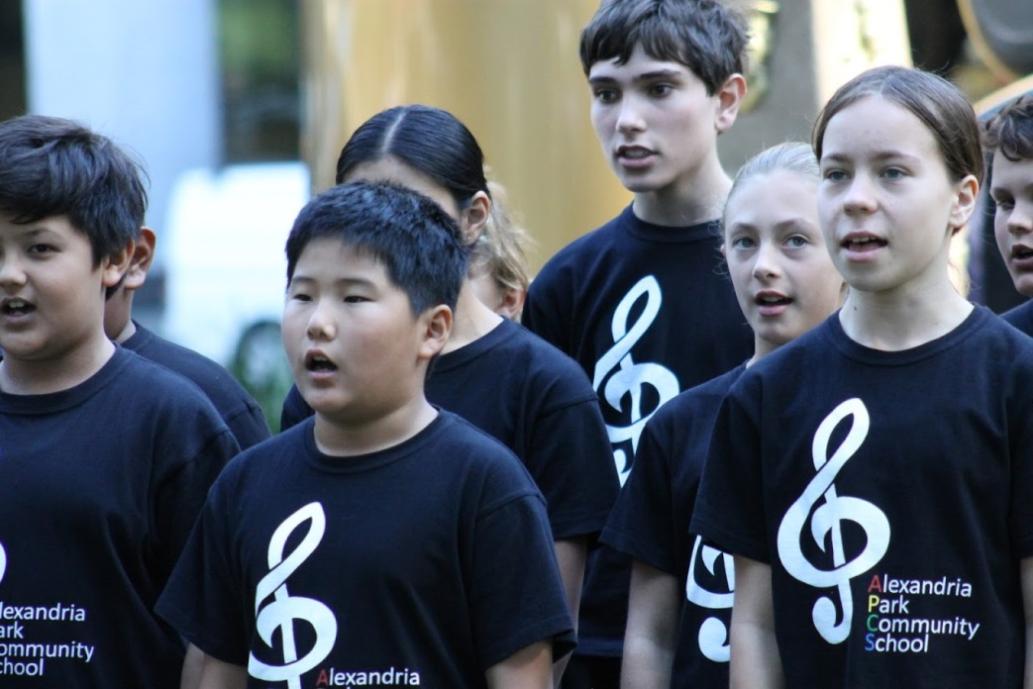
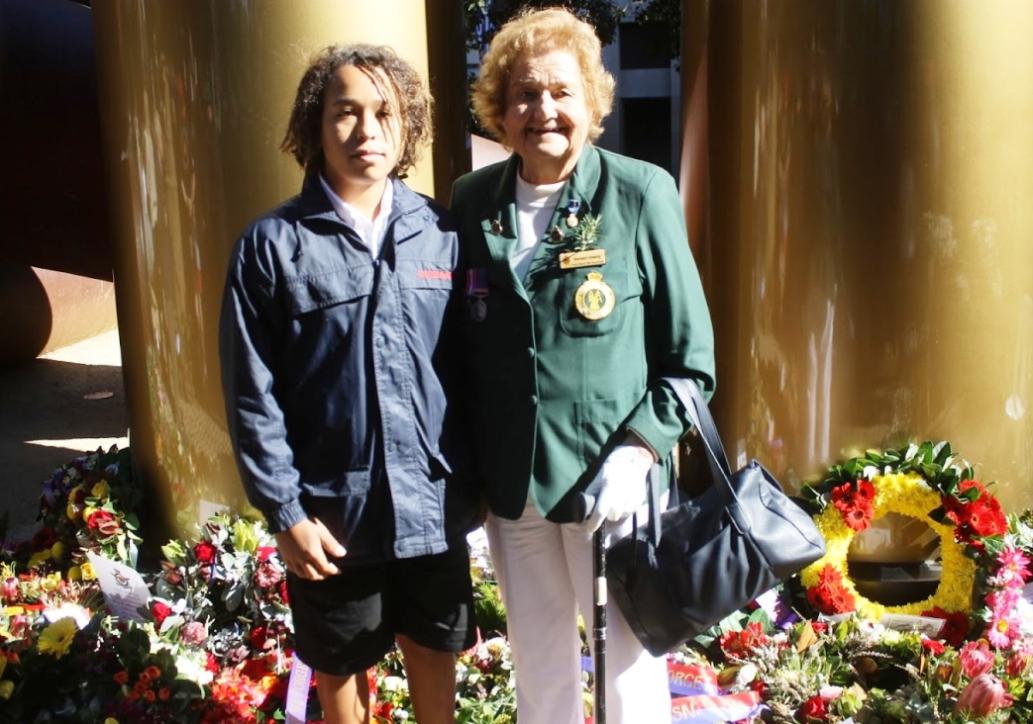
Barrenjoey High School's Oliver Wyatt with Doreen Cherry OAM, Womens Land Army Service WWII on Friday May 27th, who laid a wreath on behalf of the Women's Land Army at the Commemoration Service for Aboriginal and Torres Strait Islander Veterans At the YININMADYEMI: THOU DIST LET FALL Indigenous Artwork adjacent to Hyde Park ANZAC Memorial - this is after the Service.
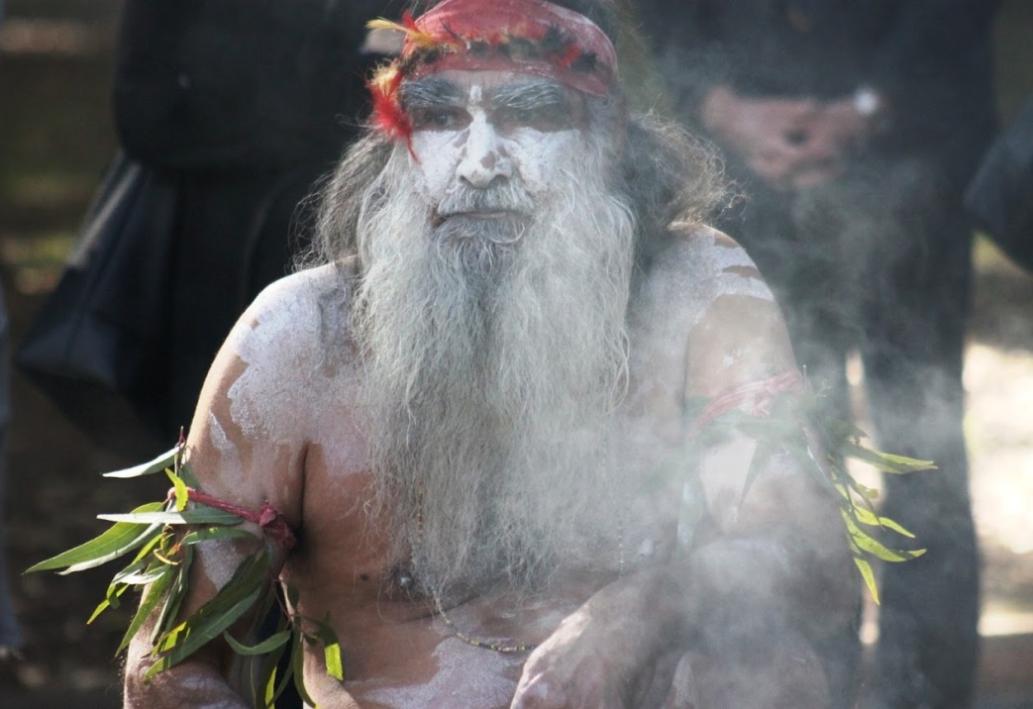
Photos by A J Guesdon, 2016.